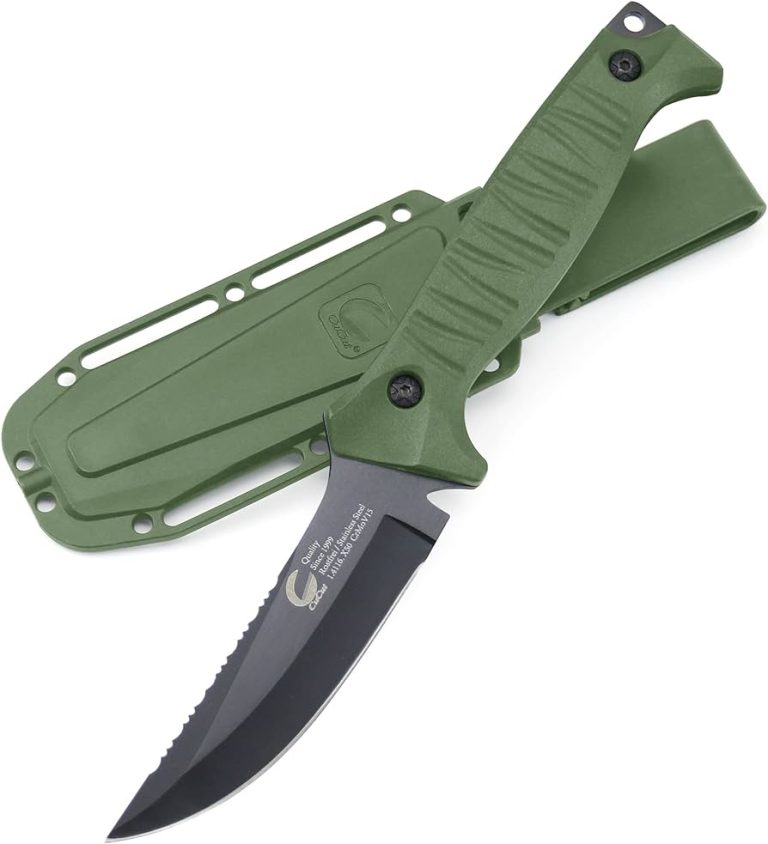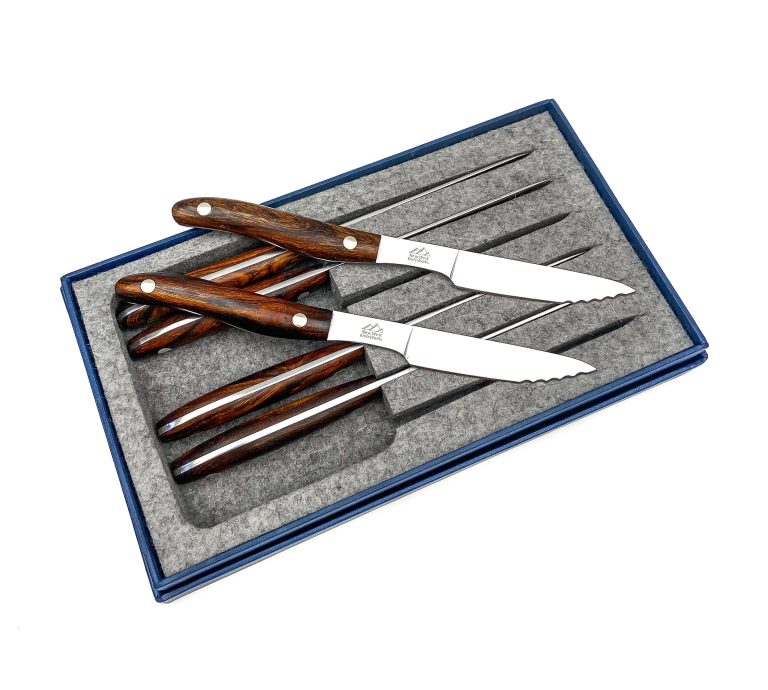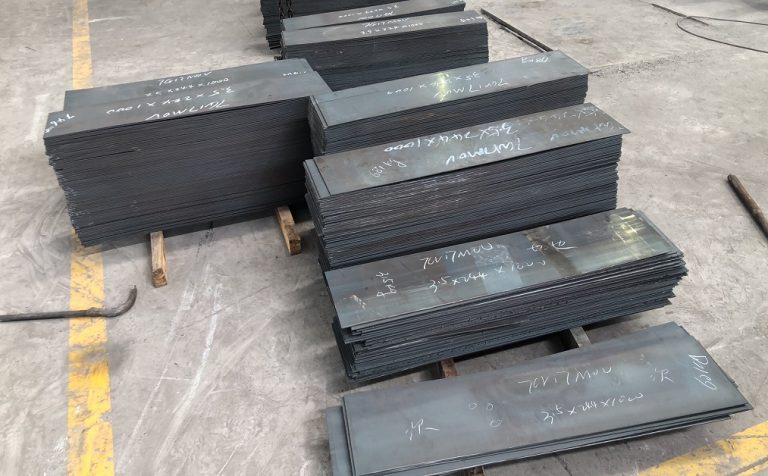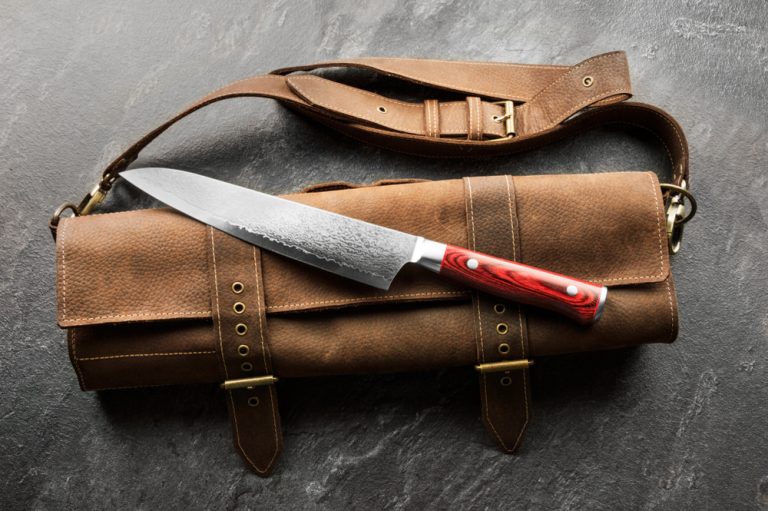Safety Measures When Using Builders Knives on the Job
Safety measures when using builders knives on the job include wearing appropriate personal protective equipment like gloves and safety glasses to prevent accidents and injuries. Additionally, always ensure that the knife is sharp to minimize the risk of slip-ups and apply proper cutting techniques, such as keeping fingers away from the blade and cutting away from the body.
Following these safety precautions will help maintain a safe working environment and reduce the likelihood of accidents when using builders knives on the job. Remember to prioritize safety at all times to protect yourself and others from harm.
Importance Of Ensuring Workplace Safety
Ensuring workplace safety is of utmost importance, especially when using builders knives on the job. Implementing safety measures, such as providing proper training, enforcing the use of protective gear, and maintaining regular equipment inspections, can significantly reduce the risk of accidents and injuries in the workplace.
It is crucial to prioritize workplace safety when using builders knives on the job. Failing to take the necessary precautions can result in serious accidents and injuries. In this section, we will explore the statistics on workplace accidents, an overview of potential risks involved in using builders knives, and the need for precautionary measures.
Statistics On Workplace Accidents
- Every year, thousands of workplace accidents occur due to improper use of tools such as builders knives.
- According to recent data, over X% of tool-related injuries in the construction industry are caused by knives.
- These accidents can lead to severe lacerations, puncture wounds, and even amputations, causing significant physical and financial harm to individuals and organizations alike.
Overview Of Potential Risks Involved In Using Builders Knives
Using builders knives without adhering to safety measures can expose workers to various risks, including:
- Lacerations: Builders knives are sharp and can easily cut through materials, making accidental cuts on hands, arms, or other body parts a common occurrence.
- Puncture wounds: Carelessness in handling builders knives can lead to accidental stabbings, causing deep puncture wounds that can damage muscles, tendons, and nerves.
- Slips and falls: Failing to properly store or dispose of builders knives can create hazards, leading to slips, falls, and potential injuries on the job site.
The Need For Precautionary Measures
To ensure workplace safety when using builders knives, it is essential to take precautionary measures, such as:
- Providing proper training: All workers should receive comprehensive training on the safe handling, storage, and use of builders knives.
- Using appropriate personal protective equipment (PPE): Workers should wear gloves, safety glasses, and other necessary PPE to reduce the risk of injuries.
- Regular maintenance and inspection: Builders knives should be regularly checked and maintained to ensure they are in good working condition and to identify any potential hazards.
- Implementing safe work practices: Establishing clear guidelines and procedures for using builders knives, such as using the appropriate cutting techniques and handling materials safely, can significantly reduce the risk of accidents.
- Encouraging communication and reporting: Workers should be encouraged to report any potential hazards or incidents involving builders knives promptly.
- Regular monitoring and supervision: Supervisors should monitor work sites regularly to ensure that all safety measures are being followed and provide guidance if necessary.
By prioritizing workplace safety and implementing these precautionary measures, we can minimize the risk of accidents and create a safer work environment when using builders knives on the job.
Understanding The Various Types Of Builders Knives
Builders knives come in various types, each serving a specific purpose. However, when using these tools, it’s crucial to prioritize safety measures on the job to prevent accidents and injuries. Be mindful of proper handling and follow essential precautions for a safe working environment.
Builders knives are essential tools in the construction industry, allowing workers to cut various materials swiftly and efficiently. However, using these knives can pose risks if proper safety measures are not followed. One crucial aspect of using builders knives safely is understanding the different types available.
Each type of builders knife offers unique features and functions that make them suitable for specific tasks. By familiarizing ourselves with these various types, we can choose the right builders knife for each job, ensuring our safety and enhancing our efficiency.
Overview Of Different Types Of Builders Knives Used On The Job:
- Fixed-blade knives: These knives feature a solid, non-folding blade that provides excellent stability and durability. They are ideal for heavy-duty tasks and can withstand high levels of pressure. Fixed-blade knives may have a straight or serrated edge, depending on the cutting requirements.
- Retractable utility knives: Also known as retractable blade knives or box cutters, these knives feature a retractable blade mechanism that allows users to adjust the length of the exposed blade. They are versatile tools suitable for a wide range of cutting tasks, including opening boxes, cutting packaging materials, and trimming materials like drywall or roofing shingles.
- Snap-off blade knives: Snap-off blade knives are designed with segmented or snap-off blades that can be easily replaced when they become dull. These knives are popular for their convenience as users can snap off the tip of the blade to expose a fresh, sharp section. Snap-off blade knives are particularly useful when working with materials that quickly blunt the blade.
Discussing The Specific Features And Functions Of Each Type:
Fixed-blade knives:
- Sturdy and durable construction for heavy-duty tasks.
- Straight or serrated edge options for various cutting needs.
- Enhanced stability and strength for cutting tough materials like wood, plastic, or carpet.
- Suitable for precision cutting or scoring with the tip of the blade.
Retractable utility knives:
- Adjustable blade length allows for versatility in cutting depths.
- Quick and easy blade replacement without additional tools.
- Lightweight and portable design for easy handling and transport.
- Ideal for general-purpose cutting, opening boxes, and light-duty tasks.
Snap-off blade knives:
- Convenient snap-off blade segments for continuous sharpness.
- Quick and tool-free blade replacement.
- Versatile blade lengths to meet different cutting requirements.
- Perfect for tasks requiring frequent blade changes or precise cutting.
Choosing The Right Builders Knife For The Task At Hand:
Selecting the proper builders knife for a specific task is crucial to ensure safety and achieve optimal results. Consider the following factors when choosing a builders knife:
- Material: Determine the type of material you will be cutting, such as wood, drywall, or carpet. Different materials may require specific blade types, either straight, serrated, or snap-off segments.
- Cutting Depth: Assess the required cutting depth to match it with the adjustable features of retractable utility knives. This allows for precise control and avoids unnecessary blade exposure.
- Comfort and Grip: Ensure the knife handle provides a comfortable grip to prevent hand fatigue during extended use. Ergonomic designs with non-slip features enhance both comfort and safety.
- Blade Replacement: Consider tasks that involve frequent blade changes. In such cases, opting for snap-off blade knives can provide efficiency, enabling swift and easy replacements.
By understanding the various types of builders knives available, along with their specific features and functions, workers can make informed decisions when selecting the appropriate tool for each construction task. This knowledge not only ensures the job is completed efficiently but also safeguards the user’s safety throughout the project.
Always prioritize safety by following proper handling and storage practices for builders knives, minimizing accidents and maximizing productivity.
Safety Gear And Personal Protective Equipment (Ppe)
Safety gear and personal protective equipment (PPE) are crucial when using builder’s knives on the job. These measures ensure the safety of workers by minimizing the risk of accidents and injuries.
Highlighting The Importance Of Safety Gear
Using builders knives on the job can be potentially hazardous if proper safety precautions are not taken. One of the most crucial aspects of ensuring safety is the use of appropriate safety gear. Wearing the right personal protective equipment (PPE) not only minimizes the risk of injuries but also provides peace of mind to the workers.
It is essential to prioritize safety by investing in high-quality safety gear. Let’s explore the importance of safety gear in detail:
- Wearing safety gear significantly reduces the risk of accidents and injuries.
- Safety gear acts as a protective barrier between the worker’s body and potential hazards.
- Properly fitted safety gear ensures a comfortable working environment.
- Safety gear boosts confidence and allows workers to concentrate on their tasks without worrying about potential risks.
- Compliance with safety regulations is crucial, and safety gear plays a vital role in meeting these standards.
Discussing The Specific Ppe Required For Using Builders Knives
When it comes to using builders knives, specific personal protective equipment (PPE) is necessary to ensure maximum safety and prevent accidents. Each piece of equipment serves a unique purpose and protects different parts of the body. Here are the essential PPE items required for using builders knives:
- Cut-resistant gloves: These gloves provide protection against potential cuts and abrasions while working with sharp tools. Look for gloves specifically designed for cut resistance to ensure optimum safety.
- Safety goggles: Protecting the eyes is crucial, as debris or metal filings can easily cause severe eye injuries. Safety goggles with a snug fit and impact-resistant lenses are a must-have when using builders knives.
- Steel-toe boots: Accidental drops are common on construction sites, and steel-toe boots safeguard the feet from heavy objects. Ensure the boots provide ankle support and have slip-resistant soles for additional protection.
- High-visibility clothing: Brightly colored vests or jackets improve visibility for other workers and machinery operators, reducing the risk of accidents.
- Protective headgear: Hard hats are essential on construction sites to protect against falling objects or head injuries. Ensure the hard hat fits properly and is in good condition.
Proper Usage And Maintenance Of Safety Gear
Simply having safety gear is not enough; it is crucial to understand how to use and maintain it properly to ensure its effectiveness. Here are some key points to remember:
- Prior to using any safety gear, thoroughly inspect it for damage or wear. Any faulty or degraded equipment should be replaced immediately.
- Ensure that safety gear is worn at all times when using builders knives, even for tasks that may seem minor or routine.
- Follow the manufacturer’s instructions regarding the appropriate usage and storage of safety gear.
- Clean and sanitize safety gear regularly to remove dirt, debris, and contaminants that may affect its performance.
- Store safety gear in a dry and clean area to prevent damage and deterioration.
- Regularly check if safety gear requires any adjustments, such as tightening straps or replacing worn-out parts.
- Educate all workers on the proper usage and maintenance of safety gear to create a culture of safety on the job site.
By highlighting the importance of safety gear, discussing the specific PPE required for using builders knives, and emphasizing proper usage and maintenance, workers can ensure a safe and secure environment while using builders knives on the job. Remember, prioritizing safety is not only a legal obligation but also a responsibility towards oneself and fellow workers.
Stay safe and protect yourself by using the appropriate safety gear at all times.
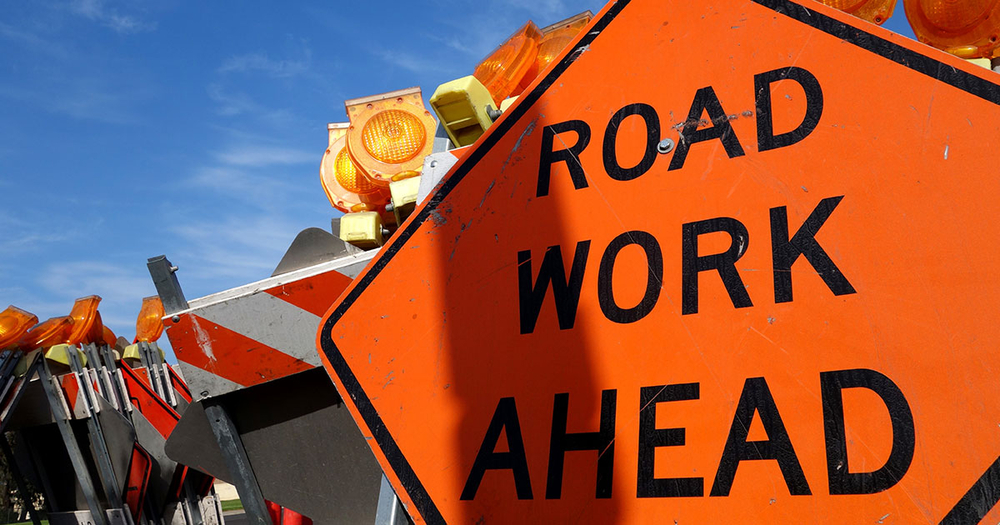
Credit: www.baselineequipment.com
Maintaining And Inspecting Builders Knives
While using builders knives on the job, it is crucial to prioritize safety measures. Regularly maintaining and inspecting the knives will help prevent accidents and ensure a safe working environment.
Regular Inspection Of Knife Blades And Handles
- Inspect blades and handles before each use to ensure they are in good condition.
- Look for any signs of damage or wear such as chips, cracks, or loose handles.
- Ensure the blades are sharp and free from any rust or corrosion.
- If any defects are found, do not use the knife and replace it immediately.
Proper Cleaning And Maintenance Techniques
- Clean the knife blades thoroughly after each use to remove any debris or dirt.
- Use mild soap and water to clean the blades, taking care to avoid any harsh chemicals that may damage the metal.
- Dry the blades completely to prevent any moisture buildup that can lead to rust or corrosion.
- Apply a thin layer of lubricant or oil to the blades to keep them protected and prevent rusting.
Recognizing Signs Of Wear And Tear
- Be vigilant in identifying signs of wear and tear on the knife blades and handles.
- Check for any bending, cracking, or splintering of the blades or handles.
- Look for loose or damaged screws that may affect the stability of the knife.
- Pay attention to any changes in the knife’s performance, such as difficulty in opening or closing, as these could indicate underlying issues.
Remember, regularly inspecting and maintaining your builders’ knives is crucial for your safety and the quality of your work. By following these guidelines, you can ensure that your knives remain in optimal condition, reducing the risk of accidents and improving their overall longevity.
Proper Handling Techniques
Proper handling techniques are essential when using builder’s knives on the job. Follow safety measures to mitigate the risk of accidents and promote a secure working environment.
Correct Grip And Posture For Using Builders Knives:
- Hold the knife firmly without applying excessive pressure to reduce the risk of accidents.
- Position your hand away from the cutting edge and ensure a secure grip.
- Maintain a relaxed but steady posture while using the knife to avoid strain or fatigue.
- Avoid gripping the knife too tightly, as this can lead to loss of control or hand fatigue.
Techniques For Controlling The Knife And Avoiding Accidents:
- Always cut away from your body to minimize the risk of injury.
- Maintain a steady cutting motion and avoid jerky movements.
- Use controlled pressure instead of applying excessive force, which can result in slips or misalignment.
- Keep your fingers away from the path of the knife to prevent accidental contact with the blade.
- Regularly inspect the blade for sharpness and replace it if necessary to prevent accidents caused by dull blades.
Tips For Working Efficiently While Ensuring Safety:
- Plan your tasks and ensure a clear workspace to minimize distractions and potential hazards.
- Use the appropriate knife for each specific task to ensure optimal efficiency and safety.
- Take regular breaks to prevent muscle fatigue and maintain focus.
- Be mindful of your surroundings and the movement of other workers to avoid accidents caused by collisions.
- When not in use, store the knife in a designated safe area away from other tools or materials.
Remember, proper handling techniques, including correct grip and posture, along with controlling the knife and working efficiently, are essential for a safer work environment. By following these tips, you can reduce the risk of accidents and increase productivity while using builders knives on the job.
Stay safe!
Safe Storage And Transportation
When using builders knives on the job, safety measures should be taken for safe storage and transportation. By securely storing and properly handling the knives, the risk of accidents and injuries can be minimized.
Builders knives are essential tools when it comes to construction work. However, the sharp blades can also pose risks if not stored and transported properly. In this section, we will explore the best practices for storing builders knives when not in use, as well as proper handling and transportation methods to avoid injuries.
Additionally, we’ll delve into the importance of securing knives to prevent accidents.
Best Practices For Storing Builders Knives When Not In Use:
- Store knives in a designated area away from other tools and equipment.
- Keep knives in a locked toolbox or cabinet to prevent unauthorized access.
- Use blade protectors or sheaths to cover the sharp edges when storing knives.
- Ensure the storage area is dry and free from moisture to prevent rusting.
- Regularly inspect and maintain knives to identify any damage or blunt edges.
Proper Handling And Transportation Methods To Avoid Injuries:
- Always handle knives with care, holding them by the handle and away from the blade.
- Use gloves when handling knives to provide an additional layer of protection.
- When transporting knives, make sure they are securely wrapped or stored in a sheath to minimize the risk of accidents.
- Avoid carrying knives in your pockets or loose-fitting clothing to prevent accidental injuries.
- Never throw or toss knives to fellow workers or anyone else.
Importance Of Securing Knives To Prevent Accidents:
- Secure knives in a fixed position when not in use to prevent them from falling or sliding off surfaces.
- Avoid leaving knives unattended in areas where they can pose a tripping hazard.
- Use a belt or holster to secure the knife to your body, ensuring it is easily accessible yet safely stored.
- Regularly check the locking mechanisms of folding knives to ensure they are secure when in use.
- Train workers on the importance of securing knives and the potential dangers of leaving them unattended.
By implementing these safety measures for storing, handling, and transporting builders knives, you can significantly reduce the risk of accidents and injuries. Always prioritize safety on the job and encourage a culture of awareness and responsibility regarding the proper use of builders knives.
Communicating And Educating Team Members
Team communication and education is crucial for promoting safety when using builders knives on the job. By effectively conveying safety measures, team members can prevent accidents and prioritize their well-being.
Importance Of Teamwork In Maintaining Safety On The Job
Teamwork plays a crucial role in maintaining safety on the job when using builder’s knives. When team members collaborate effectively and communicate openly, the risks associated with knife usage can be minimized. Here are a few key points on why teamwork is essential for ensuring safety:
- Shared responsibility: Every team member is responsible for their own safety and the safety of their colleagues. By working together, the whole team can keep a watchful eye on potential hazards and take necessary precautions.
- Support system: Teamwork creates a supportive environment where individuals can rely on each other for assistance and guidance. If someone is unsure about a safety measure or needs help using a knife, their teammates can offer advice and support.
- Enhanced vigilance: When everyone is focused on safety, there is a higher chance of identifying and rectifying any safety issues promptly. Team members can remind each other to follow safety procedures, maintain a tidy workspace, and report any concerns that could compromise safety.
Creating Awareness About Safety Measures Among Colleagues
Creating awareness about safety measures among colleagues is an essential aspect of maintaining a safe working environment when using builder’s knives. By proactively sharing knowledge and information, team members can be better prepared to handle these tools safely. Here are some effective ways to raise awareness:
- Regular communication: Encourage open and ongoing conversations about safety. Discuss potential risks, best practices, and any updates to safety protocols. Ensure everyone understands the importance of adhering to safety measures.
- Demonstration: Perform live demonstrations to show proper knife handling techniques and safety measures. This approach allows colleagues to observe and learn visually, reinforcing the correct procedures.
- Visual aids: Display safety posters, infographics, or informative materials that highlight the key safety measures when using builder’s knives. These visual aids can serve as constant reminders and reinforce safe practices.
- Sharing experiences: Encourage team members to share their experiences, both positive and negative, to foster a culture of learning from one another. By sharing lessons learned, colleagues can benefit from real-life scenarios and avoid potential accidents.
Conducting Regular Safety Training Sessions
Regular safety training sessions are vital for ensuring that team members are consistently informed and up-to-date on safety measures when using builder’s knives. These sessions help in reinforcing safety practices, enhancing skills, and reducing the chances of accidents. Here’s how to conduct effective safety training:
- Identify specific needs: Understand the skill levels and knowledge gaps within the team. Tailor the safety training sessions to address these specific needs and ensure everyone is on the same page.
- Hands-on practice: Provide practical training sessions where team members can practice using builder’s knives safely. This allows them to develop competence and confidence in handling these tools.
- Review and repetition: Conduct regular refresher sessions to reinforce safety practices. This helps prevent complacency and ensures that safety measures remain ingrained in the minds of team members.
- Documentation: Keep records of attendance and training topics covered to ensure that all team members have received the necessary safety training. This documentation serves as evidence of compliance with safety standards.
Remember, effective communication and education are crucial for maintaining safety on the job when using builder’s knives. By working as a team, creating awareness among colleagues, and conducting regular training sessions, the risk of accidents can be significantly reduced. Stay vigilant, keep learning, and prioritize safety at all times.
Emergency Procedures And First Aid
Ensure safety when using builders knives on the job by following proper emergency procedures and first aid measures. Protect yourself and others by using protective gear, keeping blades sharp, and knowing how to handle accidents. Stay prepared and minimize the risk of injuries.
Outlining Emergency Procedures In Case Of Accidents:
- Call for help immediately if someone gets injured.
- Move the injured person to a safe area, away from any hazards.
- Assess the severity of the injury and provide appropriate first aid, if trained to do so.
- If the injury is severe or life-threatening, do not hesitate to call emergency services.
- Encourage the injured person to remain calm and reassure them that help is on the way.
- Preserve the scene of the accident for investigation purposes.
- Report the incident to your supervisor or manager, providing them with all the necessary details.
- Follow any additional emergency procedures implemented by your company to ensure the safety of everyone on-site.
Highlighting The Importance Of Having A First Aid Kit On-Site:
- A well-stocked and readily accessible first aid kit is crucial for immediate response to injuries on the job.
- It allows for prompt treatment, minimizing the risk of complications and promoting a safe working environment.
- The first aid kit should include essentials such as bandages, antiseptic wipes, gloves, scissors, splints, and a first aid manual.
- Regularly check the contents of the first aid kit, ensuring that everything is in good condition and within expiry dates.
- Keep the first aid kit in a central location, easily accessible to all workers.
- Make sure all employees are aware of the first aid kit’s location and how to use its contents.
- Properly train designated employees in first aid procedures to ensure swift and effective response during emergencies.
- Regularly conduct drills to practice using the first aid kit and familiarize workers with emergency procedures.
Basic First Aid Techniques For Builders Knife-Related Injuries:
- If someone experiences a minor cut or puncture wound from a builders knife, follow these steps:
- Gently clean the wound with mild soap and water.
- Apply direct pressure using a clean cloth or sterile dressing to control bleeding.
- Elevate the injured area if possible to reduce blood flow.
- Secure the dressing in place with adhesive tape or a bandage.
- Advise the person to seek medical attention if the wound is deep, bleeding heavily, or shows signs of infection.
- In the case of an embedded object, do not remove it. Instead:
- Stabilize the object to prevent further movement.
- Cover the area with a sterile dressing while avoiding direct pressure on the object.
- Seek immediate medical help or transportation to a hospital.
- If someone’s fingers or limbs are severed or partially amputated, follow these steps while awaiting professional medical assistance:
- Control bleeding by applying direct pressure using a clean cloth or dressing.
- Raise the injured limb above heart level, if possible.
- Place the severed part in a clean plastic bag and keep it cool, but avoid freezing it.
- Do not immerse the severed part in water.
- Arrange for immediate transportation to a hospital, ensuring the severed part is taken along.
Remember, the safety of workers is of utmost importance. By being prepared, having a well-equipped first aid kit, and knowing basic first aid techniques, you can significantly reduce the risk and severity of builders knife-related injuries on the job.
Compliance With Occupational Health And Safety Standards
Ensure compliance with occupational health and safety standards by implementing effective safety measures when using builders knives on the job. Protect yourself and others by following proper handling techniques, wearing protective gear, and regularly inspecting and maintaining the knives to prevent accidents and injuries.
Understanding The Legal Obligations For Employers And Employees:
- It is crucial for employers and employees to be aware of their legal responsibilities and obligations related to occupational health and safety when using builders knives on the job. Here are some important points to consider:
- Employers are responsible for ensuring a safe working environment for their employees. This includes providing necessary training, equipment, and implementing safety protocols for using builders knives.
- Employees, on the other hand, have a duty to follow the established safety guidelines and use the provided tools properly. By adhering to these regulations, they can mitigate the risks associated with using builders knives.
- Compliance with occupational health and safety standards is essential in preventing workplace accidents, injuries, and potential legal issues.
Discussing Specific Safety Regulations For Using Builders Knives:
- When it comes to using builders knives, certain safety regulations must be followed to minimize the risk of accidents. These regulations generally include:
- PPE (Personal Protective Equipment): Employees should always wear appropriate PPE, such as cut-resistant gloves and safety glasses, to protect themselves from potential injuries.
- Proper Tool Handling: Workers should be trained on how to handle builders knives safely, including proper gripping techniques, cutting motions, and storing guidelines.
- Blade Maintenance: Regular blade inspection and maintenance are important to ensure that the knives are sharp and in good condition. Dull or damaged blades can lead to accidents during use.
- Controlled Work Areas: It is advisable to work in controlled and well-lit areas to minimize the potential hazards associated with using builders knives. Clearing the work areas of clutter and obstructions can also help prevent accidents.
- Safe Storage: Builders knives should be stored securely and out of reach when not in use. This prevents unauthorized access and reduces the risk of injuries.
Importance Of Ongoing Compliance And Enforcement:
- Ongoing compliance and enforcement of safety measures for using builders knives is crucial for maintaining a safe working environment. Here’s why it matters:
- Accident Prevention: Regularly reinforcing compliance and enforcing safety regulations significantly reduces the chances of workplace accidents and injuries. This ensures the well-being of employees.
- Legal Compliance: Staying compliant with occupational health and safety standards helps employers fulfill their legal obligations and prevent legal consequences that may arise from non-compliance.
- Reputation and Trust: By prioritizing safety and demonstrating ongoing compliance, employers build trust with their employees. This fosters a positive work environment and promotes a healthy company reputation.
- Continuous Improvement: Regularly reviewing and reinforcing safety measures allows for continuous improvement in the workplace. Identifying potential risks and implementing necessary changes helps enhance safety protocols over time.
- Employee Engagement: Employees feel valued and motivated when their safety is prioritized. Ongoing compliance and enforcement create a culture of safety, encouraging employees to actively participate in maintaining a safe work environment.
Remember, compliance with occupational health and safety standards is essential for all parties involved in using builders knives on the job. Understanding the legal obligations, following specific safety regulations, and ensuring ongoing compliance and enforcement contribute to a safer and more productive work environment.
Frequently Asked Questions For Safety Measures When Using Builders Knives On The Job
How Should I Safely Handle A Builder’S Knife?
To safely handle a builder’s knife, always wear protective gloves and eye goggles. Use the knife with caution, making sure to keep your fingers away from the blade. When not in use, store the knife in a sheath or retract the blade.
Always cut away from your body to avoid accidents.
Are There Any Safety Precautions I Need To Take When Using A Builder’S Knife?
Yes, there are a few important safety precautions to follow when using a builder’s knife. Firstly, make sure the blade is sharp, as a dull blade can slip and cause accidents. Additionally, never use excessive force when cutting and avoid using the knife in awkward positions.
Lastly, always be aware of your surroundings and keep the knife out of reach of children.
What Should I Do If The Blade Of The Builder’S Knife Becomes Dull?
If the blade of your builder’s knife becomes dull, it’s important to replace it or sharpen it. Using a dull blade can lead to accidents, as it requires more force to cut, increasing the risk of slips or injuries. Invest in a sharpening tool or take the knife to a professional to ensure it remains sharp and safe to use.
Can I Use A Builder’S Knife For Purposes Other Than Cutting?
While a builder’s knife is primarily designed for cutting, it can also be used for other purposes. However, it’s important to use caution and ensure that the knife is appropriate for the task at hand. Be mindful of the blade’s sharpness and always handle the knife with care to avoid accidents or damage.
Conclusion
Prioritizing safety measures while using builders knives on the job is crucial to avoid potential accidents and injuries. By following these recommended precautions, such as using a secure grip, wearing protective gloves, and maintaining a clean and organized work area, workers can minimize the risk of accidents and create a safer working environment.
Regularly inspecting and maintaining the knives, as well as using the appropriate cutting techniques, are also vital for preventing accidents. By ensuring that everyone on the job site is aware of these safety measures and receives proper training, the chances of accidents can be significantly reduced.
Remember, safety should always be the top priority when using any tools on the job, and taking the necessary precautions can make a significant difference in preventing accidents and protecting workers’ well-being.


